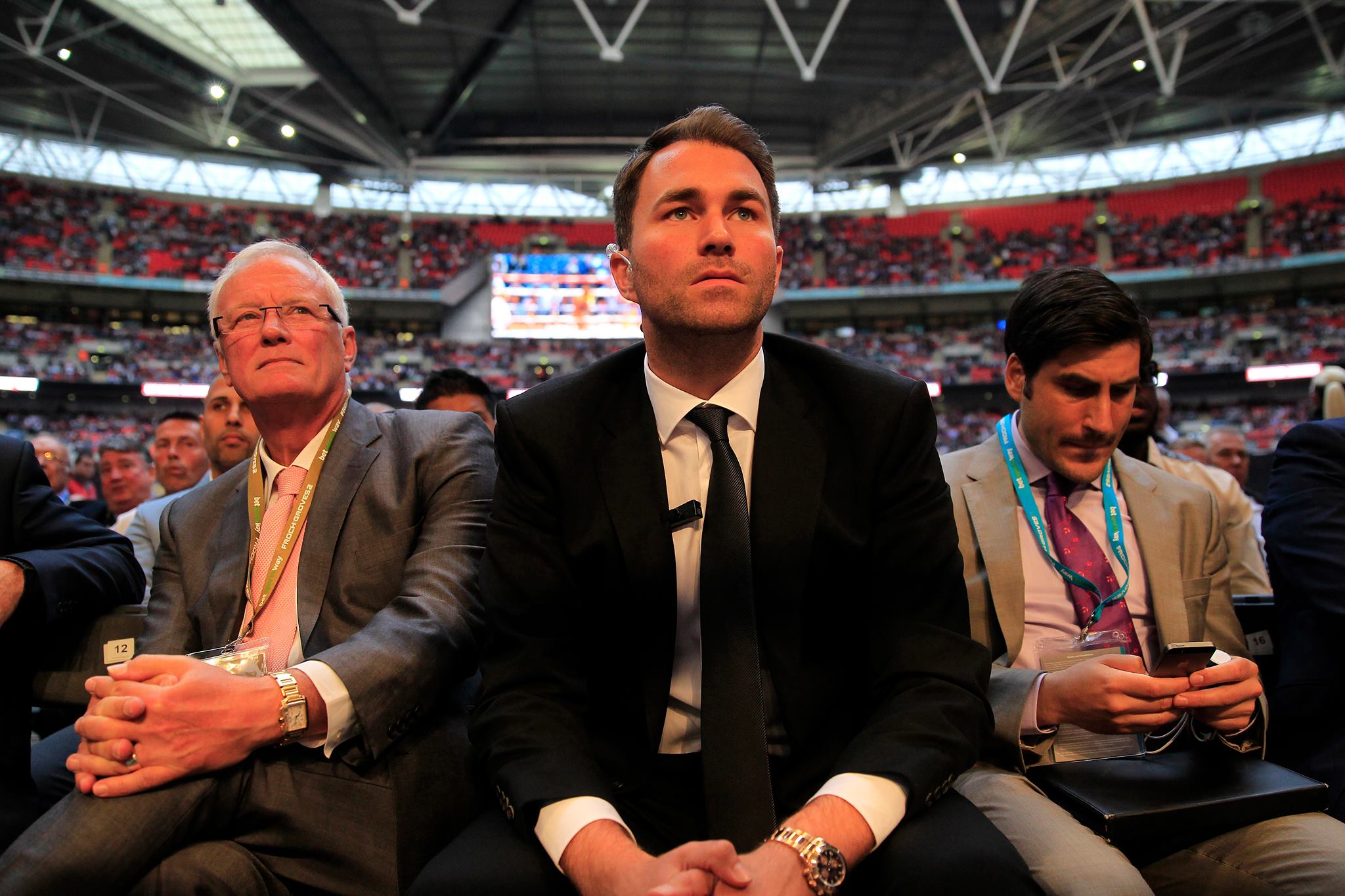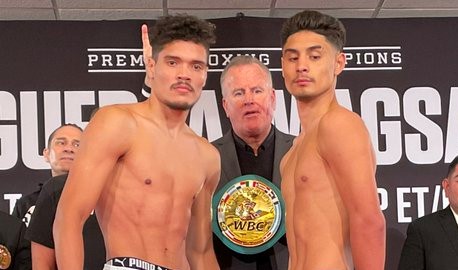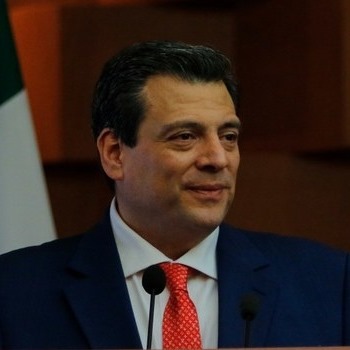By Sam Geraci
What’s Really Ailing Boxing?
After Marcos “Chino” Maidana outclassed Adrien “The Problem” Broner in a WBA welterweight title fight in which I was hard-pressed to find three rounds to score in Broner’s favor from my couch-side view, I, like many of the sport’s writers and truest fans, wanted to jump on the Web to relish in the Broner bashing. But I didn’t because Broner isn’t the problem. Broner’s simply a symptom of what ails boxing: its journalism.
In professional boxing, what drives too many decisions about matchups, particularly television matchups, is what sells and can be marketed. And in this era of sport in which boxing is really nothing more than a niche in the US market what sells is the fabrication and then propagandizing of a fighter or event as being the best. It’s the reason a good friend made the following remark after the Broner-Maidana fight: “This is my big knock on boxing. I’m told who is good before I can actually find out who really is. I wish it was more like basketball.”
And that’s the ugly truth about boxing’s journalism: it’s much more like that of the music industry than it is of a sport. As such, agents, promoters publicists, networks, journalists and the boxing sanctioning bodies, which serve a similar role in boxing as do the Grammy’s in music, all collude to create the perception of the “best” or “gutsiest” or “most boring” fighter and event. Then, networks and news outlets sell that product to fight fans everywhere who buy it and fall for it each and every time. It’s why the Broner defeat has roused so much attention and coverage even from non-boxing sites and pundits. The Broner-Maidana fight was a real upset but not because Maidana was less accomplished in the ring than Broner. It was an upset because Al Haymon, Golden Boy Promotions, HBO, Showtime and most major news sources sold Broner as the heir-apparent to Mayweather’s P4P and PPV thrones, and did something they very rarely do on this level: They made a mistake.
When one accepts the commonalities between boxing and the music industry, there should be no questions as to how former music promoter Al Haymon has taken over the sport since 2000 and now manages nearly all of Golden Boy’s most popular fighters including Mayweather, Broner, Amir Khan and as of July of this year, Paulie Malignaggi.
Malignaggi was an interesting Haymon signing because even though he has been a popular junior welterweight and welterweight for more than a decade and has worked as a color-commentator for Showtime, he has been critical of Haymon. In fact, after Malignaggi’s loss to Broner on June 22, he even went so far as to state that Haymon paid off a boxing judge. Although Malignaggi has since expressed regret for his comments, Malignaggi has not expressed regret for pointing out what he sees as another wrong in boxing: its journalism. Here are some of Malignaggi’s comments during a press conference on October 15 before his Brooklyn bout with Zab Judah:
Why don’t you guys risk your jobs and bring out what’s wrong with the sport sometimes instead of keeping quiet, so you can get ringside credentials? A lot of you guys are fanboys instead of media guys; you know what I mean? Hey, if boxing was a mainstream sport, a lot of you guys would not have a job because real media guys would be covering it, OK? A lot of you guys ought to be thankful that this is a secondary sport in the country. It’s popular, but it’s a secondary sport. So, do your job right.
Malignaggi is 100 percent correct. Most boxing writers for the sport’s top sites and journals, myself included, don’t get paid a dime or enough to cover fights full-time and are simply happy to be ringside or involved in the fight hype or privy to some real news or rumors that the journalist would never be issued credentials again for publishing or sharing. Moreover, with the exception of ESPN, which rarely writes anything controversial about the sport aside from its pieces from Rafael that have worked to sabotage big money fights for the ring legend James Toney, most sites would be restricted or denied access to fighters and events for publishing negative news.
How Can Boxing’s Journalism Be Cured?
Most boxing journalism has been reduced to a regurgitation of press releases, previews, predictions, soft interviews, recaps, mythical matchups and rankings. Of these, mythical rankings and P4P lists have done the most harm.
Although the rankings of the sanctioning bodies have proven to be flawed and even corrupt at times, they do have a system for ranking fighters at the national, international and world levels. If followed correctly, to get ranked and to keep his ranking, a fighter must stay active and participate in eight to twelve round bouts against other ranked fighters and report his activity. Eventually, if a fighter follows the rules and pays his sanctioning fees, he should challenge for a title while being guaranteed minimum purse sizes. Although these purse sizes don’t apply to fighters like Mayweather and Pacquiao, for less known fighters who might have been fighting for as little as $200 per round, these mandatories can be life changers.
Even though it can work eventually, the costs that it a fighter often incurs to maintain his ranking or to litigate when the sanctioning body doesn’t enforce its rules often result in the fighter not being able to pursue the ranking, or the fighter electing to sign with a major promotional company that might not even want the fighter to pursue the ranking. Because of this, many sites and journals have created their own rankings. The journal rankings are intended to simplify the process, negate the bias and reduce the number of champions to one per division. It sounds great, but that’s not what has happened.
What has happened, especially with the P4P rankings, is that most sites and journals have put together an unpaid or poorly paid committee of journalists who are often incompetent or biased. Even though some journalists might fear for their ringside credentials, the primary reason that journalists fall short in their rankings is that their views are limited because of their identity and lack of exposure.
There is no denying that one’s identity plays a role in understanding the sport. For boxing journalists and their rankings this can be seen when comparing the rankings that are published in different countries and regions. Find a boxing journalist from Europe and then one from the States and then ask them to rank the greatness of European fighters like Joe Calzaghe, Wladamir Klitschko and Chris Eubanks against American fighters like Bernard Hopkins, Muhammad Ali and Mike Tyson. It’s not just nationalism. It’s a predisposition that was cultured as that journalist read, listened to and followed the sport. Whenever I examine my scorecards, I often wonder if my perception of what’s happening has been shaped completely by my desire as a kid to score fights as HBO’s Howard Lederman did. It’s the reason major title fights should be scored by judges from different countries and regions—not simply because of the perception of corruption as is expressed by broadcasters.
Lack of exposure is another reason journalists fall short in their rankings. There are thousands of fighters in each division and hundreds of bouts each month. Most are never televised or featured on a major undercard, and most journalists base their rankings on TV fighters and/or press releases and features about fighters that are marketed heavily. So much so, that Vasyl Lomachenko, who has had only one pro fight, recently received a vote for ESPN’s P4P list and fighters like Robert Guererro and Canelo Alvarez somehow crept into The Ring’s P4P list as their fights with Mayweather approached.
Although the sanctioning bodies can be as biased as journalists, they are not limited in their exposure. Unlike a journalist’s rankings, the rankings of the bodies should take into account the thousands of updates they receive from fighters and their teams each week from press releases, videos and activity updates. But what about Broner skipping weight classes to challenge Malignaggi or all of the box offs and eliminators that never happen?
Yes, it’s true that the sanctioning bodies are flawed, but what’s the alternative? The alternative is what we have now: An era in which the greatest fighters and champions will be remembered for the fights that didn’t take place; an era in which it was impossible to get coverage as a prospect without the backing of a major adviser or promotional company; an era in which fans were told who was good before given the opportunity to decide for themselves.
Despite the flaws of the sanctioning bodies, the truth is that they are boxing’s only hope to crown real champions and to make real matchups. They have the teeth to do it by stripping fighters of their ranks while fighters have the power to hold them accountable in court or arbitration. If journalists shift their focus from mythical rankings to an examination of the rankings, benefits and wrongdoings involving the sanctioning bodies, fight fans will have the knowledge to be able to decide which fighters and events are significant. Attacking the networks, promoters and fighters for creating characters like Broner, which is basically the only way that black fighters are marketed profitably today, is a foolish copout. Prize fighting is driven by supply and demand. If a market were created for real champions and matchups, HBO, Showtime, ESPN, Haymon, Golden Boy and Top Rank would follow suit.
I think that market is here, and at least one sanctioning body’s ranking has given fans and journalists what they have been asking for: Mayweather vs. Pacquiao. For more than four years, the Pacquiao-Mayweather debate has raged on, and no one’s mythical rankings or P4P lists have made a difference. Now, the WBC has ranked Pacquiao number one for Mayweather’s welterweight title. If boxing writers can cure what ails boxing by providing real coverage on why Mayweather’s title and Pacquaio’s ranking matter, maybe, just maybe the fight world can get what it’s been asking for.
Sam Geraci is a boxing writer and teacher in Chicago. Follow twitter @sammygwrites.



















LarryFex
06/25/2024 at 3:12 am
pin-up oyunu: pin up azerbaijan – pin up apk yukle
JeffreyMok
06/26/2024 at 7:47 am
http://northern-doctors.org/# mexican border pharmacies shipping to usa
Williamfrumn
06/26/2024 at 9:05 am
mexico drug stores pharmacies: mexican northern doctors – mexican pharmacy
Williamfrumn
06/26/2024 at 11:53 am
п»їbest mexican online pharmacies: buying prescription drugs in mexico – pharmacies in mexico that ship to usa
JeffreyMok
06/26/2024 at 1:57 pm
https://northern-doctors.org/# mexico pharmacy
Williamfrumn
06/26/2024 at 2:23 pm
buying from online mexican pharmacy: Mexico pharmacy that ship to usa – best online pharmacies in mexico
JeffreyMok
06/26/2024 at 4:55 pm
https://northern-doctors.org/# mexican rx online
JeffreyMok
06/26/2024 at 7:44 pm
https://northern-doctors.org/# mexico drug stores pharmacies
JeffreyMok
06/26/2024 at 10:26 pm
https://northern-doctors.org/# best online pharmacies in mexico
Williamfrumn
06/27/2024 at 12:07 am
medication from mexico pharmacy: mexico drug stores pharmacies – mexican rx online
JeffreyMok
06/27/2024 at 1:26 am
https://northern-doctors.org/# reputable mexican pharmacies online
Williamfrumn
06/27/2024 at 2:01 am
п»їbest mexican online pharmacies: mexico drug stores pharmacies – reputable mexican pharmacies online
Williamfrumn
06/27/2024 at 3:51 am
mexican pharmaceuticals online: mexican pharmacy online – mexican mail order pharmacies
Richardled
06/27/2024 at 4:31 am
mexican mail order pharmacies [url=https://northern-doctors.org/#]northern doctors[/url] medication from mexico pharmacy
JeffreyMok
06/27/2024 at 4:31 am
http://northern-doctors.org/# mexico drug stores pharmacies
Williamfrumn
06/27/2024 at 5:41 am
best online pharmacies in mexico: mexican pharmacy – buying from online mexican pharmacy
JeffreyMok
06/27/2024 at 7:26 am
https://northern-doctors.org/# mexican pharmacy
Williamfrumn
06/27/2024 at 7:32 am
medication from mexico pharmacy: northern doctors – mexican mail order pharmacies
Williamfrumn
06/27/2024 at 9:25 am
purple pharmacy mexico price list: northern doctors – best online pharmacies in mexico
JeffreyMok
06/27/2024 at 10:44 am
https://northern-doctors.org/# mexico drug stores pharmacies
Richardled
06/27/2024 at 1:55 pm
mexican pharmaceuticals online [url=http://northern-doctors.org/#]п»їbest mexican online pharmacies[/url] best online pharmacies in mexico
Williamfrumn
06/27/2024 at 4:43 pm
mexican pharmaceuticals online: mexican pharmacy northern doctors – mexican online pharmacies prescription drugs
JeffreyMok
06/27/2024 at 5:50 pm
https://northern-doctors.org/# mexican border pharmacies shipping to usa
Williamfrumn
06/27/2024 at 6:23 pm
mexican mail order pharmacies: northern doctors – mexico drug stores pharmacies
JeffreyMok
06/27/2024 at 8:18 pm
https://northern-doctors.org/# mexico pharmacies prescription drugs
Williamfrumn
06/27/2024 at 9:45 pm
reputable mexican pharmacies online: northern doctors – best online pharmacies in mexico
Richardled
06/27/2024 at 10:48 pm
mexican online pharmacies prescription drugs [url=http://northern-doctors.org/#]northern doctors[/url] mexican mail order pharmacies
JeffreyMok
06/27/2024 at 10:59 pm
http://northern-doctors.org/# medicine in mexico pharmacies
Williamfrumn
06/27/2024 at 11:28 pm
mexican online pharmacies prescription drugs: northern doctors pharmacy – pharmacies in mexico that ship to usa
JeffreyMok
06/28/2024 at 1:37 am
https://northern-doctors.org/# mexican mail order pharmacies
JeffreyMok
06/28/2024 at 4:14 am
http://northern-doctors.org/# reputable mexican pharmacies online
Williamfrumn
06/28/2024 at 4:18 am
mexican drugstore online: mexico drug stores pharmacies – buying prescription drugs in mexico
Williamfrumn
06/28/2024 at 5:52 am
buying from online mexican pharmacy: Mexico pharmacy that ship to usa – mexican rx online
JeffreyMok
06/28/2024 at 6:50 am
http://northern-doctors.org/# medicine in mexico pharmacies
Williamfrumn
06/28/2024 at 7:29 am
mexico pharmacies prescription drugs: Mexico pharmacy that ship to usa – mexican drugstore online
Richardled
06/28/2024 at 7:44 am
mexican drugstore online [url=https://northern-doctors.org/#]northern doctors pharmacy[/url] mexican online pharmacies prescription drugs
JeffreyMok
06/28/2024 at 9:31 am
https://northern-doctors.org/# buying from online mexican pharmacy
Williamfrumn
06/28/2024 at 2:03 pm
mexican rx online: mexican pharmacy northern doctors – best online pharmacies in mexico
JeffreyMok
06/28/2024 at 2:55 pm
https://northern-doctors.org/# mexican drugstore online
Williamfrumn
06/28/2024 at 3:46 pm
mexican drugstore online: mexican pharmacy northern doctors – mexico drug stores pharmacies
Richardled
06/28/2024 at 4:48 pm
mexican pharmaceuticals online [url=https://northern-doctors.org/#]mexican pharmacy[/url] mexico pharmacies prescription drugs
JeffreyMok
06/28/2024 at 5:40 pm
http://northern-doctors.org/# mexican mail order pharmacies
Williamfrumn
06/28/2024 at 7:13 pm
medicine in mexico pharmacies: mexican pharmacy online – buying from online mexican pharmacy
JeffreyMok
06/28/2024 at 8:19 pm
https://northern-doctors.org/# mexican pharmacy
Williamfrumn
06/28/2024 at 8:52 pm
buying prescription drugs in mexico: Mexico pharmacy that ship to usa – mexican mail order pharmacies
Williamfrumn
06/28/2024 at 10:32 pm
mexican online pharmacies prescription drugs: northern doctors pharmacy – mexican online pharmacies prescription drugs
JeffreyMok
06/28/2024 at 10:56 pm
http://northern-doctors.org/# mexican drugstore online
Ronnienop
06/29/2024 at 2:18 am
medicine in mexico pharmacies [url=https://cmqpharma.online/#]cmq pharma mexican pharmacy[/url] best online pharmacies in mexico
Ronnienop
06/29/2024 at 5:20 am
mexico pharmacies prescription drugs [url=https://cmqpharma.com/#]online mexican pharmacy[/url] pharmacies in mexico that ship to usa
Ronnienop
06/29/2024 at 8:07 am
buying prescription drugs in mexico [url=https://cmqpharma.online/#]mexico pharmacy[/url] mexican pharmacy
Stephenrhype
06/29/2024 at 10:33 am
mexico pharmacies prescription drugs: mexican online pharmacy – pharmacies in mexico that ship to usa
Ronnienop
06/29/2024 at 10:55 am
mexican pharmaceuticals online [url=http://cmqpharma.com/#]cmqpharma.com[/url] mexican online pharmacies prescription drugs
Ronnienop
06/29/2024 at 1:39 pm
pharmacies in mexico that ship to usa [url=https://cmqpharma.com/#]mexican pharmacy online[/url] mexico pharmacies prescription drugs
Ronnienop
06/29/2024 at 4:39 pm
mexican pharmacy [url=https://cmqpharma.online/#]mexican pharmacy[/url] mexico pharmacy
DonaldBiono
06/29/2024 at 7:35 pm
п»їbest mexican online pharmacies
http://cmqpharma.com/# mexico drug stores pharmacies
buying prescription drugs in mexico online
Ronnienop
06/29/2024 at 7:46 pm
mexican rx online [url=https://cmqpharma.online/#]cmq pharma mexican pharmacy[/url] п»їbest mexican online pharmacies
Ronnienop
06/30/2024 at 1:23 am
best online pharmacies in mexico [url=http://cmqpharma.com/#]cmq pharma[/url] purple pharmacy mexico price list
Ronnienop
07/02/2024 at 2:16 am
mexican rx online [url=https://cmqpharma.com/#]cmq pharma[/url] pharmacies in mexico that ship to usa
Jeffreyber
07/02/2024 at 3:15 am
https://cmqpharma.com/# mexican rx online
mexican pharmacy
CharlesRor
07/19/2024 at 11:10 pm
india online pharmacy [url=https://indiapharmast.com/#]pharmacy website india[/url] Online medicine order
Michaelmoolo
07/20/2024 at 1:05 am
indian pharmacy online: п»їlegitimate online pharmacies india – india pharmacy mail order
Davidtoows
07/20/2024 at 4:03 am
buying prescription drugs in mexico online: mexican pharmacy – best online pharmacies in mexico
CharlesRor
07/20/2024 at 6:23 am
india pharmacy mail order [url=https://indiapharmast.com/#]best india pharmacy[/url] online shopping pharmacy india
Davidtoows
07/20/2024 at 8:55 am
best online canadian pharmacy: canadian pharmacy near me – medication canadian pharmacy
Michaelmoolo
07/20/2024 at 10:02 am
escrow pharmacy canada: canada drugs online – canadian pharmacy near me
Davidtoows
07/20/2024 at 2:28 pm
world pharmacy india: buy medicines online in india – pharmacy website india
CharlesRor
07/20/2024 at 4:24 pm
canadian pharmacy scam [url=http://canadapharmast.com/#]canada drugs online reviews[/url] reputable canadian online pharmacy
CharlesRor
07/21/2024 at 2:11 am
mexican border pharmacies shipping to usa [url=http://foruspharma.com/#]mexican pharmaceuticals online[/url] medicine in mexico pharmacies
Myronnepay
07/21/2024 at 10:32 am
https://amoxildelivery.pro/# amoxicillin for sale online
buy paxlovid online [url=http://paxloviddelivery.pro/#]paxlovid buy[/url] paxlovid covid
Jamesjam
07/21/2024 at 6:56 pm
Paxlovid buy online: п»їpaxlovid – paxlovid buy
Myronnepay
07/21/2024 at 8:28 pm
http://amoxildelivery.pro/# buying amoxicillin online
amoxicillin online pharmacy [url=https://amoxildelivery.pro/#]order amoxicillin 500mg[/url] amoxicillin buy canada
Myronnepay
07/22/2024 at 5:42 am
https://paxloviddelivery.pro/# paxlovid covid
doxycycline 200mg price [url=https://doxycyclinedelivery.pro/#]buy doxycycline in usa[/url] doxycycline order canada
Myronnepay
07/22/2024 at 3:20 pm
https://clomiddelivery.pro/# get generic clomid
paxlovid pill [url=https://paxloviddelivery.pro/#]paxlovid covid[/url] paxlovid buy
Jamesjam
07/22/2024 at 8:13 pm
amoxicillin 750 mg price: amoxicillin price without insurance – amoxicillin 500mg over the counter
Myronnepay
07/23/2024 at 12:36 am
https://clomiddelivery.pro/# can i buy clomid without a prescription
Paxlovid over the counter [url=https://paxloviddelivery.pro/#]paxlovid price[/url] paxlovid generic
Jamesjam
07/23/2024 at 8:59 am
how much is amoxicillin prescription: buy amoxicillin 500mg – amoxicillin in india
Myronnepay
07/23/2024 at 9:56 am
http://amoxildelivery.pro/# amoxicillin no prescription
paxlovid buy [url=http://paxloviddelivery.pro/#]п»їpaxlovid[/url] п»їpaxlovid
Myronnepay
07/23/2024 at 7:49 pm
https://amoxildelivery.pro/# amoxicillin cost australia
ciprofloxacin 500mg buy online [url=https://ciprodelivery.pro/#]buy cipro cheap[/url] ciprofloxacin generic
Myronnepay
07/24/2024 at 5:08 am
https://clomiddelivery.pro/# how to get generic clomid pills
order clomid tablets [url=http://clomiddelivery.pro/#]where to get clomid[/url] how to get generic clomid without prescription